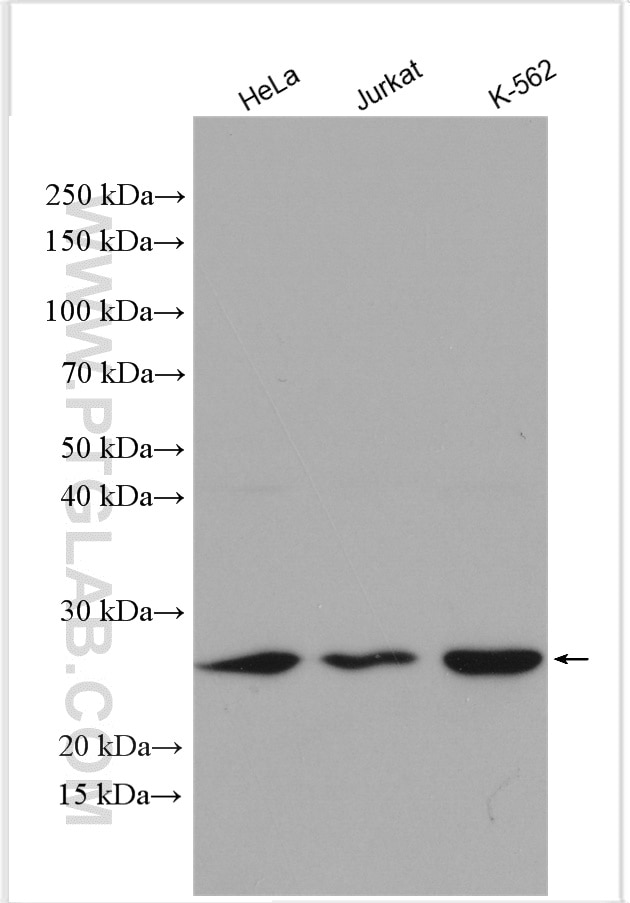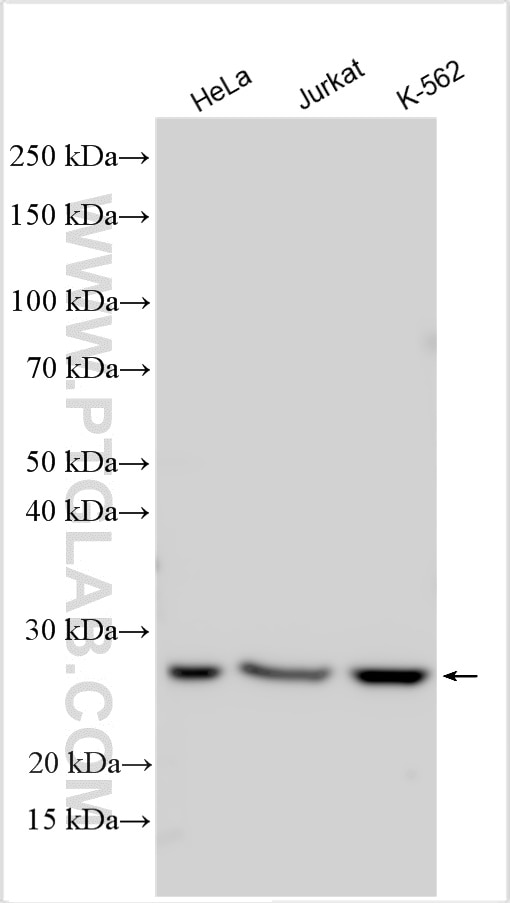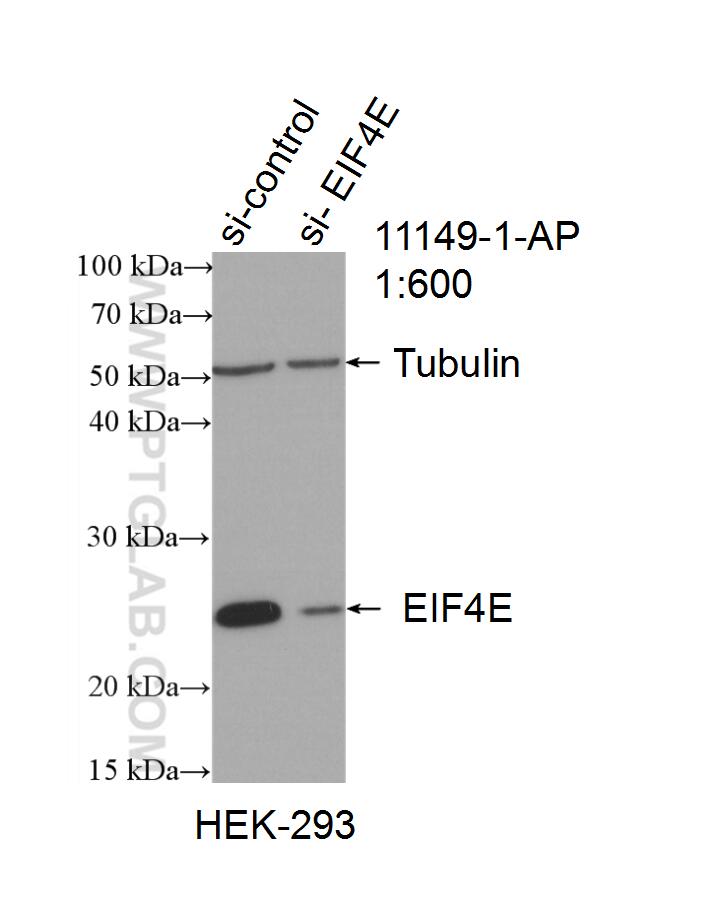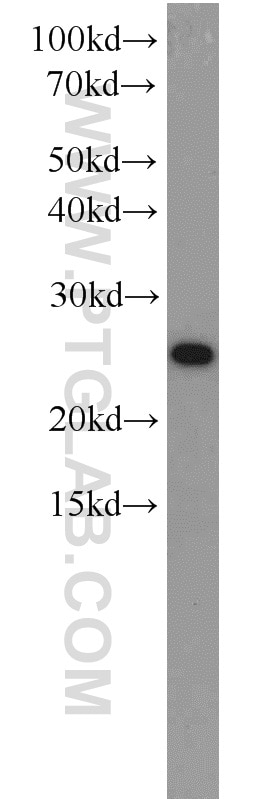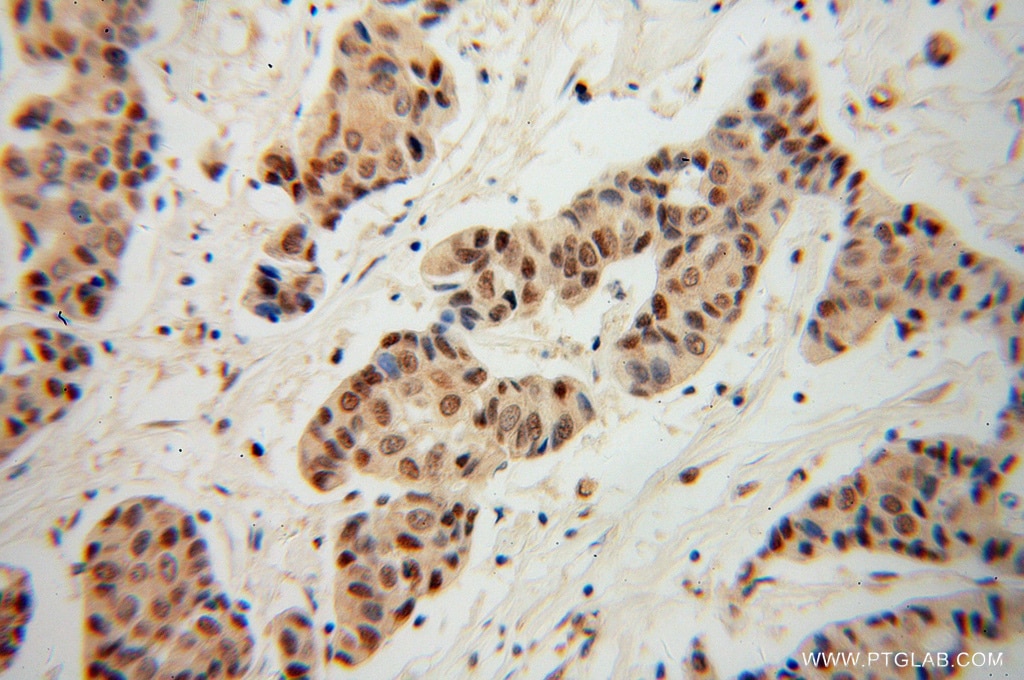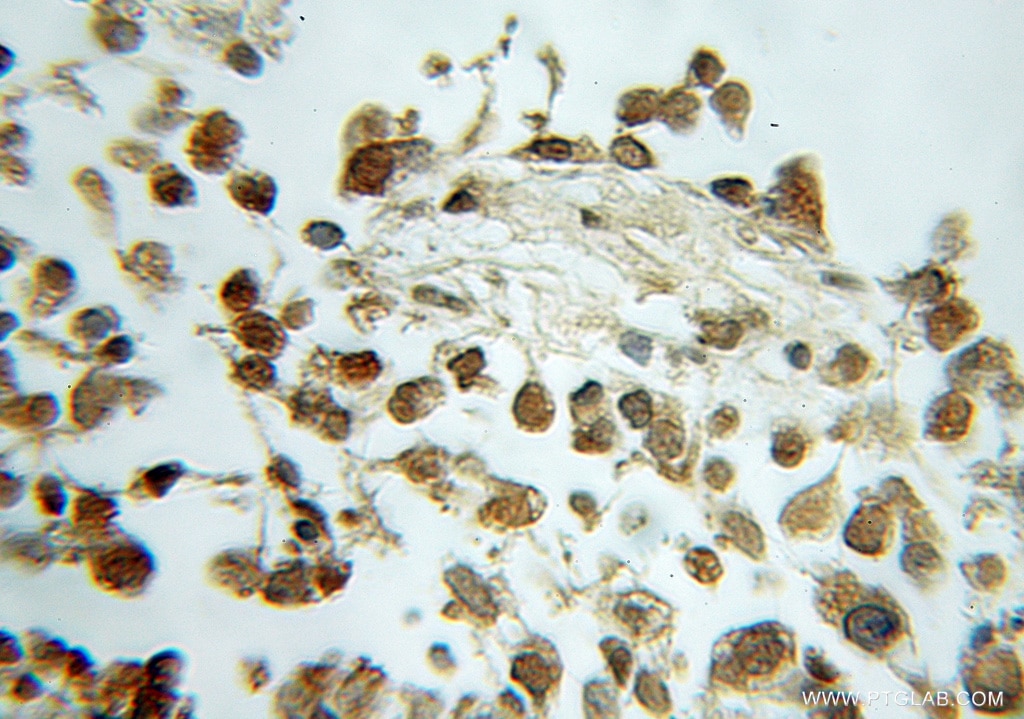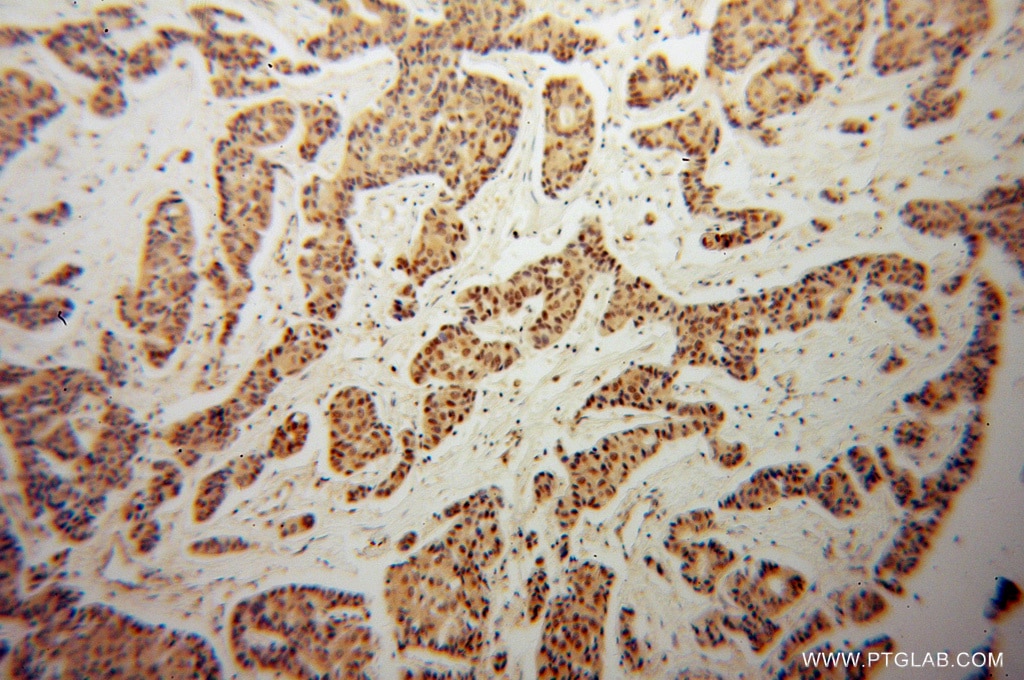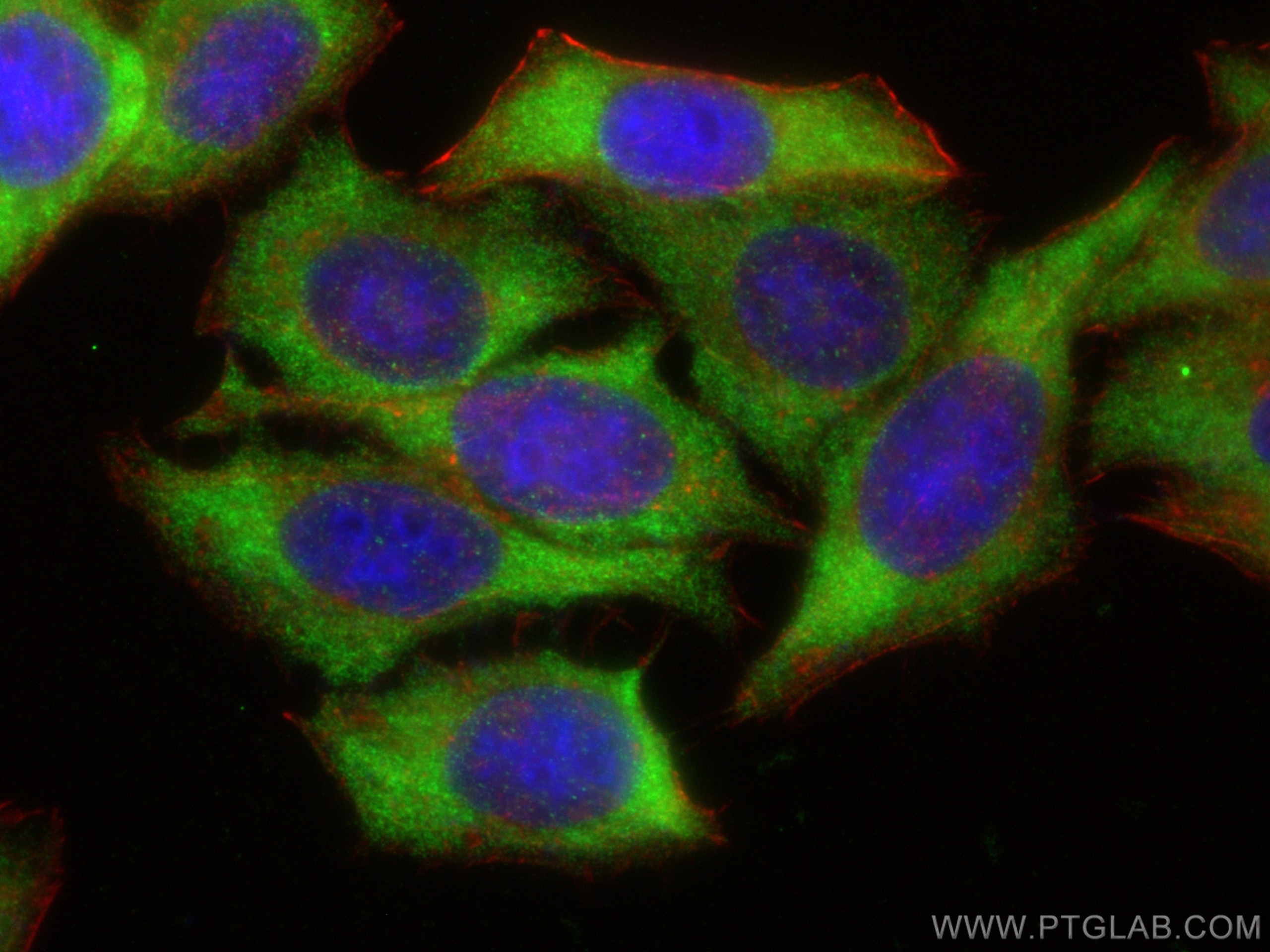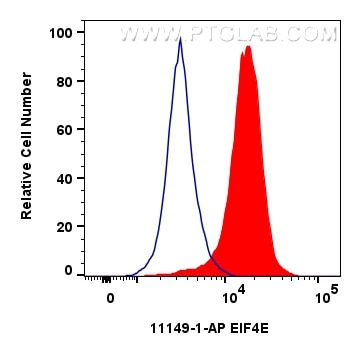- Featured Product
- KD/KO Validated
EIF4E Polyklonaler Antikörper
EIF4E Polyklonal Antikörper für WB, IHC, IF/ICC, FC (Intra), ELISA
Wirt / Isotyp
Kaninchen / IgG
Getestete Reaktivität
human und mehr (1)
Anwendung
WB, IHC, IF/ICC, FC (Intra), ELISA
Konjugation
Unkonjugiert
Kat-Nr. : 11149-1-AP
Synonyme
Galerie der Validierungsdaten
Geprüfte Anwendungen
| Erfolgreiche Detektion in WB | HeLa-Zellen, HEK-293-Zellen, Jurkat-Zellen, K-562-Zellen |
| Erfolgreiche Detektion in IHC | humanes Mammakarzinomgewebe, humanes Gliomgewebe Hinweis: Antigendemaskierung mit TE-Puffer pH 9,0 empfohlen. (*) Wahlweise kann die Antigendemaskierung auch mit Citratpuffer pH 6,0 erfolgen. |
| Erfolgreiche Detektion in IF/ICC | HepG2-Zellen |
| Erfolgreiche Detektion in FC (Intra) | HeLa-Zellen |
Empfohlene Verdünnung
| Anwendung | Verdünnung |
|---|---|
| Western Blot (WB) | WB : 1:1000-1:4000 |
| Immunhistochemie (IHC) | IHC : 1:20-1:200 |
| Immunfluoreszenz (IF)/ICC | IF/ICC : 1:200-1:800 |
| Durchflusszytometrie (FC) (INTRA) | FC (INTRA) : 0.40 ug per 10^6 cells in a 100 µl suspension |
| It is recommended that this reagent should be titrated in each testing system to obtain optimal results. | |
| Sample-dependent, check data in validation data gallery | |
Veröffentlichte Anwendungen
| WB | See 20 publications below |
| IHC | See 1 publications below |
| IF | See 1 publications below |
Produktinformation
11149-1-AP bindet in WB, IHC, IF/ICC, FC (Intra), ELISA EIF4E und zeigt Reaktivität mit human
| Getestete Reaktivität | human |
| In Publikationen genannte Reaktivität | human, Maus |
| Wirt / Isotyp | Kaninchen / IgG |
| Klonalität | Polyklonal |
| Typ | Antikörper |
| Immunogen | EIF4E fusion protein Ag1626 |
| Vollständiger Name | eukaryotic translation initiation factor 4E |
| Berechnetes Molekulargewicht | 29 kDa |
| Beobachtetes Molekulargewicht | 26-29 kDa |
| GenBank-Zugangsnummer | BC012611 |
| Gene symbol | EIF4E |
| Gene ID (NCBI) | 1977 |
| Konjugation | Unkonjugiert |
| Form | Liquid |
| Reinigungsmethode | Antigen-Affinitätsreinigung |
| Lagerungspuffer | PBS mit 0.02% Natriumazid und 50% Glycerin pH 7.3. |
| Lagerungsbedingungen | Bei -20°C lagern. Nach dem Versand ein Jahr lang stabil Aliquotieren ist bei -20oC Lagerung nicht notwendig. 20ul Größen enthalten 0,1% BSA. |
Hintergrundinformationen
Eukaryotic translation initiation factor 4E, also known as eIF4E, is a protein that in humans is encoded by the EIF4E gene. eIF4E is the mRNA cap-binding protein, known as a general initiation factor allowing for mRNA-ribosome interaction and cap-dependent translation in eukaryotic cells. eIF4E is a polypeptide that exists as both a free form and as part of the eIF4F pre-initiation complex. Regulation of eIF4E may be achieved via three distinct mechanisms: transcription, phosphorylation, and inhibitory proteins. This is a rabbit polyclonal antibody raised against the full-length human EIF4E.
Protokolle
| Produktspezifische Protokolle | |
|---|---|
| WB protocol for EIF4E antibody 11149-1-AP | Protokoll herunterladen |
| IHC protocol for EIF4E antibody 11149-1-AP | Protokoll herunterladen |
| IF protocol for EIF4E antibody 11149-1-AP | Protokoll herunterladen |
| FC protocol for EIF4E antibody 11149-1-AP | Protokoll herunterladen |
| Standard-Protokolle | |
|---|---|
| Klicken Sie hier, um unsere Standardprotokolle anzuzeigen |
Publikationen
| Species | Application | Title |
|---|---|---|
Cancer Res HBXIP and LSD1 Scaffolded by lncRNA Hotair Mediate Transcriptional Activation by c-Myc. | ||
Nucleic Acids Res SUMOylation of the m6A-RNA methyltransferase METTL3 modulates its function. | ||
Mol Ther RNA m6A methylation regulates the dissemination of cancer cells via modulating expression and membrane localization of β-catenin. | ||
Theranostics KDM6A promotes imatinib resistance through YY1-mediated transcriptional upregulation of TRKA independently of its demethylase activity in chronic myelogenous leukemia. | ||
Cell Death Dis Multifunctional viral protein γ34.5 manipulates nucleolar protein NOP53 for optimal viral replication of HSV-1. | ||
ACS Chem Neurosci Quercitrin Rapidly Alleviated Depression-like Behaviors in Lipopolysaccharide-Treated Mice: The Involvement of PI3K/AKT/NF-κB Signaling Suppression and CREB/BDNF Signaling Restoration in the Hippocampus |
